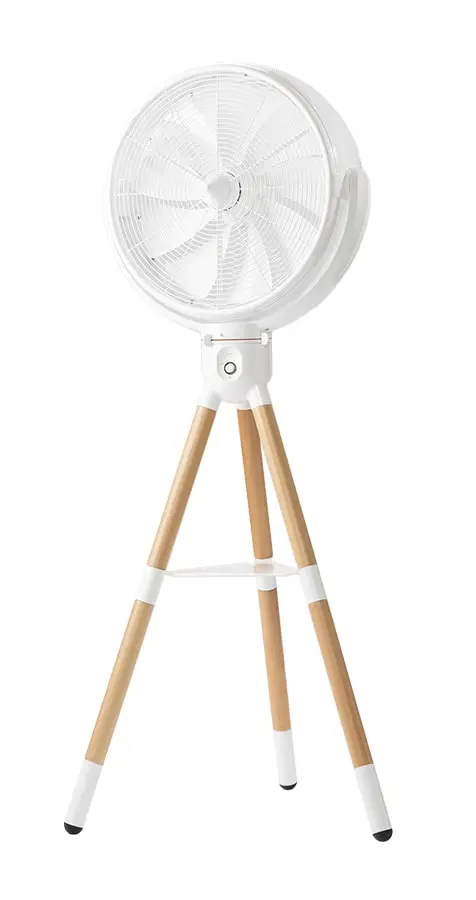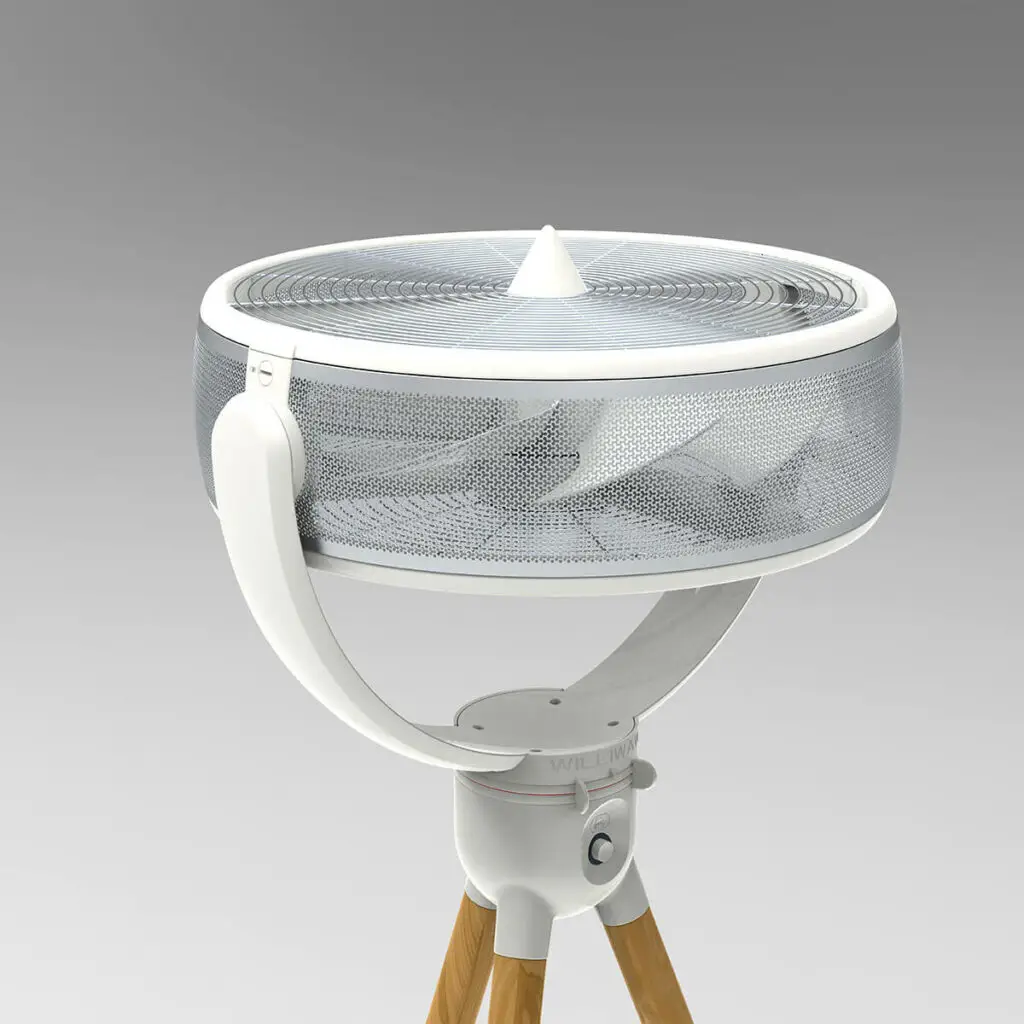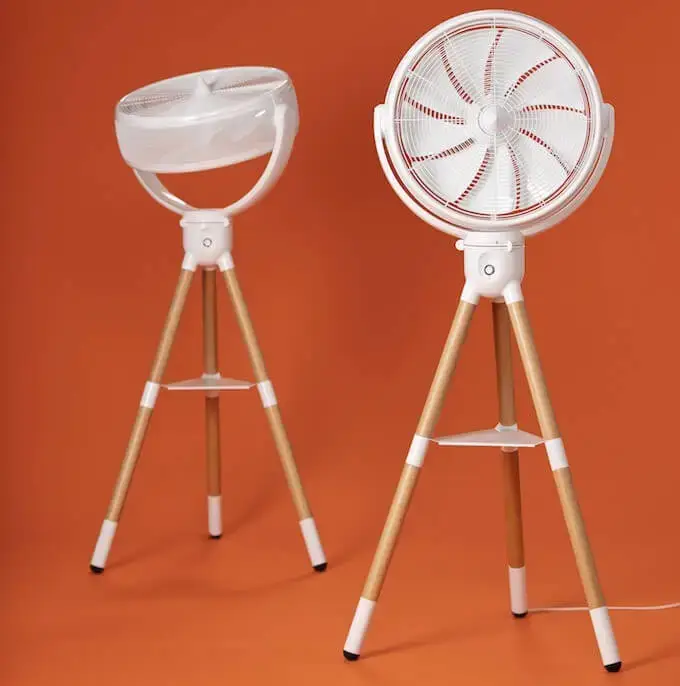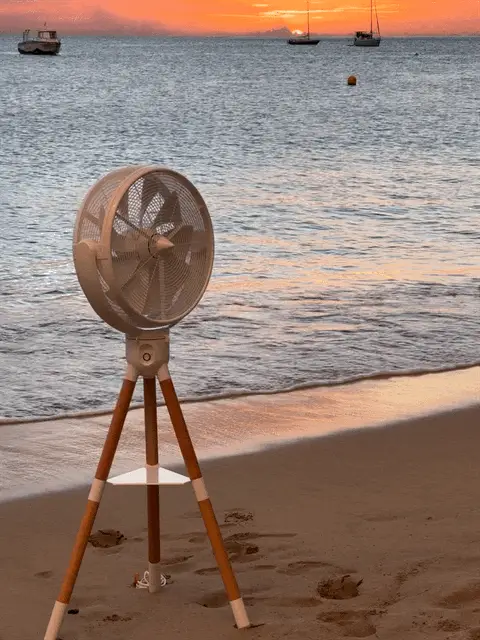Replace your air conditioning and reduce your heating consumption by more than 30%*.
*in the room where it is located, and if your heating system is thermostatically controlled





*supply and dispatch of faulty parts and circuit boards + provision of a repair tutorial.
Consuming between 5 and 48 watts to cool a space, in sharp contrast to the 800 to 2500 watts of a conventional air conditioner, the Williwaw generates a flow of air, from breeze to powerful storm, while remaining as silent as possible.
It’s the perfect ecological ventilation for deep, peaceful nights, even in the hottest weather.
Let’s take a 50m2 room with a 3.5m ceiling height as an example. The carbon impact retained by ADEME is 79g CO ” per kWh.
Air conditioning | Williwaw | |
|---|---|---|
Purchase + installation costs | 6 350 € | 1 898 € |
Monthly electricity consumption | 9450 kWh | 14 kWh |
Cost of monthly electricity consumption | 1323 € | 2,02 € |
Monthly carbon impact of consumption | 7466 kg/Co2 | 11 kg/Co2 |
Total cost over 1 year | 11792 € | 1 906 € |
Annual carbon impact of consumption | 66541 kg/Co2 | 137 kg/Co2 |
Over 2000 Williwaw already sold. 5/5 on all reviews
What a magnificent innovation from the ingenious Stéphane Thirouin, who has created his williwaw with both design and technology
A cool breeze in the silence and comfort of its remote-controlled mini thermostat, and with a concern for low energy consumption that we all hold dear. Finally, a child’s memory resurfaces of the well-thought-out, playful assembly of this work of art.
Jay Giulia (confirmed customer) – June 25, 2023
We suffered through the heatwave of summer 2022 and it was perfect to have the fan blowing its little breeze over our bed, without a sound.
The power consumption of 5 to 10W on the first gears is infinitely ridiculous compared with an air-conditioner, for equivalent or even superior comfort (no sensation of cold).
In the end, we use it mainly in winter to circulate the warm air in our living room, and it’s difficult to quantify the gains in heating costs, as everything depends on the thermostat setting. On the other hand, there are real gains in terms of comfort, with our feet feeling less cold.
As a bonus, we now use it between seasons and in winter to dry our clothes on the drying rack: after an evening+night of 12h of blowing at fairly low speed (say 10W) in front of the drying rack, the clothes are almost dry, no unpleasant smell of mildew and, above all, a consumption of 12*10=120Wh! Again, ridiculous compared to a tumble-dryer cycle which happily exceeds 1000Wh, even for the most economical (heat pump).
François Garcia (confirmed customer) – July 9, 2021
Perfect nights without the infernal noise of spinning blades, very low power consumption and great design. And the added bonus of being able to control it from your phone is really nice!
Laurenn (confirmed customer) – July 2, 2020
It’s the third one I’ve bought. We have one for each bedroom, and we no longer have to worry about the heatwave at night.
Not a sound and a breeze that feels good!
We would never have invested in an air-conditioner for ecological reasons, but this product convinced us. It’s an investment, but well worth it, especially as it also runs in winter in the living room with mezzanine, tempering the room. And he’s so handsome!
Carole LASSALLE (confirmed customer) – July 6, 2022
Yes, it’s expensive, but it’s just as efficient as an air-conditioner, much more environmentally friendly and, above all, consumes much less energy.
Quality has to be paid for. It’s time to encourage innovation by French designers!
François Garcia (confirmed customer) – July 9, 2021
Made from steel, beech and polycarbonate, and assembled with screws, Williwaw ensures exceptional durability.
All components are replaceable, and the removable propeller is dishwasher-safe, with a 10-year warranty on mechanical parts.
The Williwaw, both ecological fan and destratifier, combines performance, silence, aesthetics and longevity, winning over its users unanimously.
The Williwaw’s 9-blade propeller produces a sound 2 to 3 times lower than its competitors, offering a silent solution for warm nights.
Noise level (to EN60704-2-7) :
With its pivoting head and temperature sensors, the Williwaw provides silent convection, automatically triggered by temperature differences between floor and ceiling, reducing heating costs by 30% wherever it is installed.
Useful when you consider that 78% of CO2 emissions from homes come from heating.

Its remote control? Your phone.
The Williwaw, adjustable to your preferences, offers a variety of airflows, from light breeze to strong wind. With variable oscillation from 45 to 270 degrees and three speeds, it offers a fully customizable experience.
This intelligent destratifying fan is controlled via a dedicated mobile app, compatible with iOS and Android.
Its wide, slow, soft and enveloping airflow can be adjusted remotely, for optimum comfort without discomfort – goodbye to flying papers!
By regulating temperature, Williwaw eliminates excessively hot or cold zones, increasing comfort in open spaces, conference rooms and offices.
Even at full throttle, its powerful engine won’t be a hindrance to occupants who need to concentrate. They can simply enjoy the pleasant ambient air.
How is this possible? It’s all in the design and choice of materials.
What’s more, in the event of a breakdown, the electronic board can be replaced at cost price, thanks to a connector system that avoids the need for soldering, thus facilitating repairs.
2 possible heights to be selected prior to assembly depending on the number of foot segments
But what else?
Assembly without clipping, gluing or welding. 115 screws ensure robustness and total repairability.

A Williwaw projects its air stream up to 8m50 away, and sweeps up to 270 degrees. It covers an area of 170 m2

I’m Stéphane Thirouin, a designer with a passion for creating objects that are useful, durable and aesthetically pleasing.
Faced with a sweltering heatwave, determined to avoid air conditioning for ecological reasons and dissatisfied with the performance of existing fans, I decided to design the Williwaw, a fan that’s quiet, powerful, energy-efficient and durable.

Williwaw's assembly session is a piece of cake
Henry Grimaud, Journal Les Numériques article du 07/08/22
Assembly is quick, requiring just a few minutes.
Summary of assembly steps :
To see the full video, please consult our leaflet.
Position the Williwaw fan strategically to optimize air circulation in the room.
For optimum comfort, ideally place it at some distance from walls to allow air to circulate freely.
In summer, orient it to create a direct flow of cool air towards living areas. For winter heat distribution, install it in destratification mode near a heat source to diffuse warm air accumulated on the ceiling.
Location may vary according to the season and the layout of your space.
Choosing the ideal fan involves considering several criteria, including power, noise level, and additional features such as timer or rotation.
But on the market (against Dyson, Rowenta and Honeywell), the Williwaw excels in discretion, aesthetics and power.
For efficient cooling, check the air flow rate and the ability to set different speeds. The price will reflect the technology, features and durability of the product.
Quiet fans are ideal for undisturbed working or sleeping, with models that can be adjusted for height or orientation, ensuring absolute comfort.
To make the air cooler with a fan, place a container of ice water or ice packs in front of it. The air passing over the ice cools and helps lower the room temperature, increasing the cooling effect.